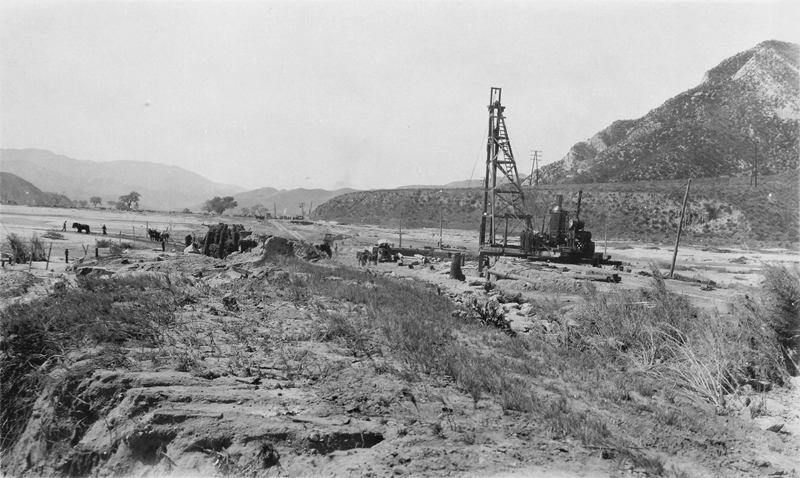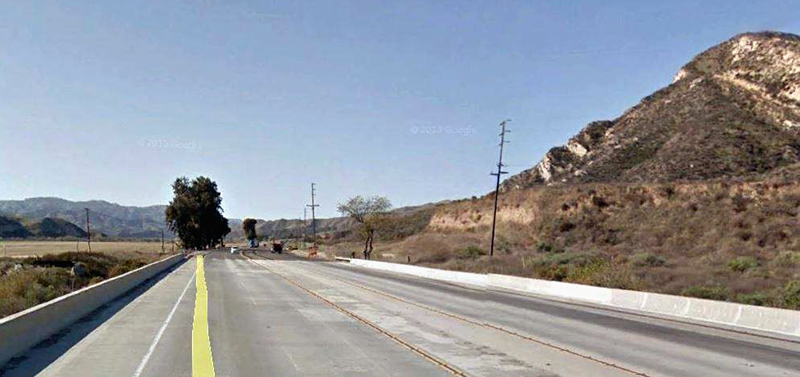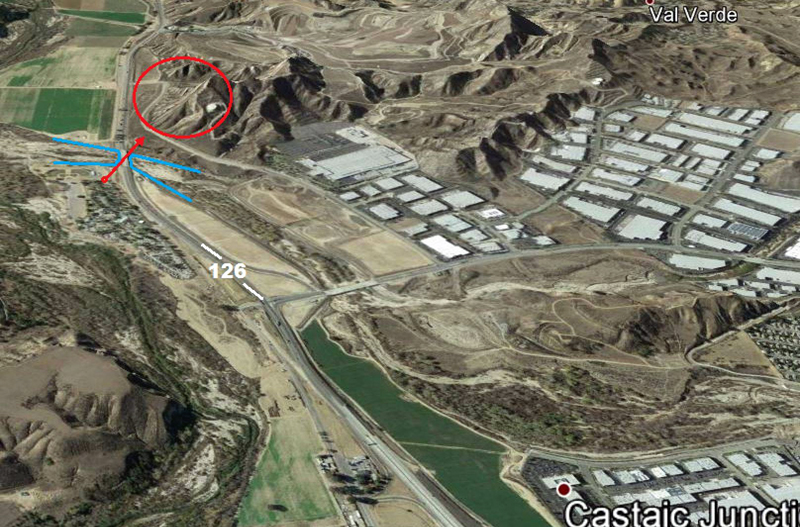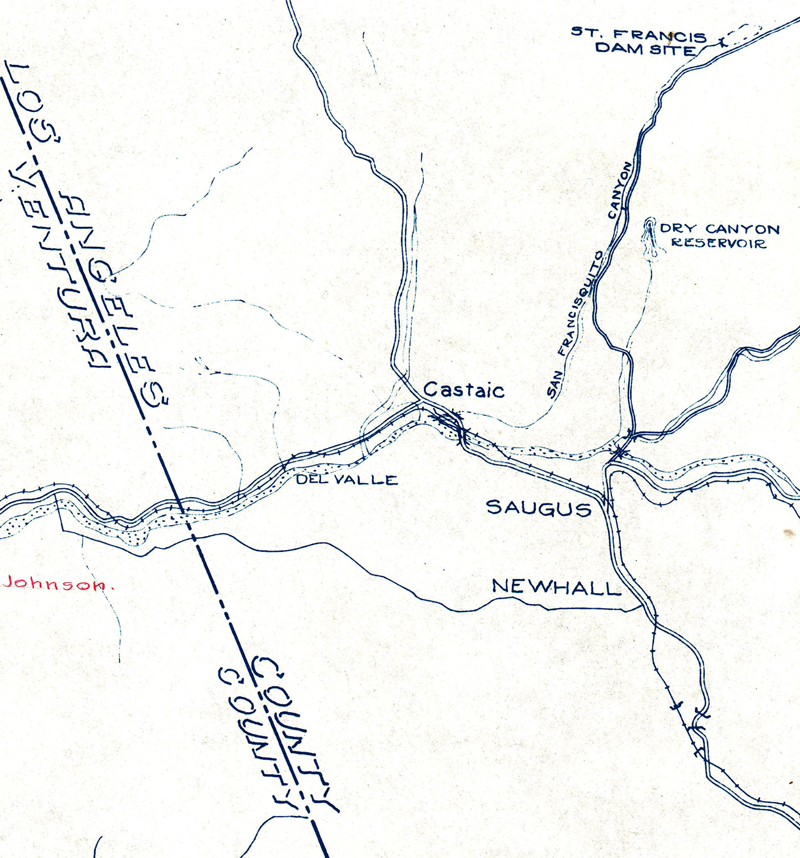|
|
Southwest of Castaic Junction | St. Francis Dam Disaster

Click image to enlarge A steam-powered pile driver used southwest of Castaic Junction to install timber piles for a new bridge to replace one that washed away when the floodwaters hit during the early morning hours of March 13, 1928.
From Jason Brice: A Google image of the same view, looking west from the Highway 126 bridge over the Santa Clara River, about halfway between Castaic Junction and Del Valle.
From Jason Brice: Google image showing the location today (2014) of the "pile driver" image in RO2803e. The red circle surrounds the hills behind and to the right of the pile driver. The red arrow is pointing at it from the photographer's position. The blue lines are the edges of the Santa Clara River bed with the highway bridge between them (under the red arrow). The road in the middle, running perpendicular to Highway 126, is Commerce Center Drive. The industrial buildings between Commerce Center Drive and the red circle are the U.S. Postal Service mail processing facility. Immediately behind the red circle (above it, to the right) is the Chiquita Canyon Landfill.
According to Jason Brice, the pile driver seen in this photo (RO2803e) and this photo (RO2803f) is in the same location, one view looking west and the other east. Brice has circled the spot where the pile driver is being used to rebuild the bridge over Castaic Creek.
Construction on the 600-foot-long, 185-foot-high St. Francis Dam started in August 1924. With a 12.5-billion-gallon capacity, the reservoir began to fill with water on March 1, 1926. It was completed two months later. At 11:57:30 p.m. on March 12, 1928, the dam failed, sending a 180-foot-high wall of water crashing down San Francisquito Canyon. An estimated 411 people lay dead by the time the floodwaters reached the Pacific Ocean south of Ventura 5½ hours later. It was the second-worst disaster in California history, after the great San Francisco earthquake and fire of 1906, in terms of lives lost — and America's worst civil engineering failure of the 20th Century.
RO2803e: 19200 dpi jpeg. Online image only. |
The site owner makes no assertions as to ownership of any original copyrights to digitized images. However, these images are intended for Personal or Research use only. Any other kind of use, including but not limited to commercial or scholarly publication in any medium or format, public exhibition, or use online or in a web site, may be subject to additional restrictions including but not limited to the copyrights held by parties other than the site owner. USERS ARE SOLELY RESPONSIBLE for determining the existence of such rights and for obtaining any permissions and/or paying associated fees necessary for the proposed use.










